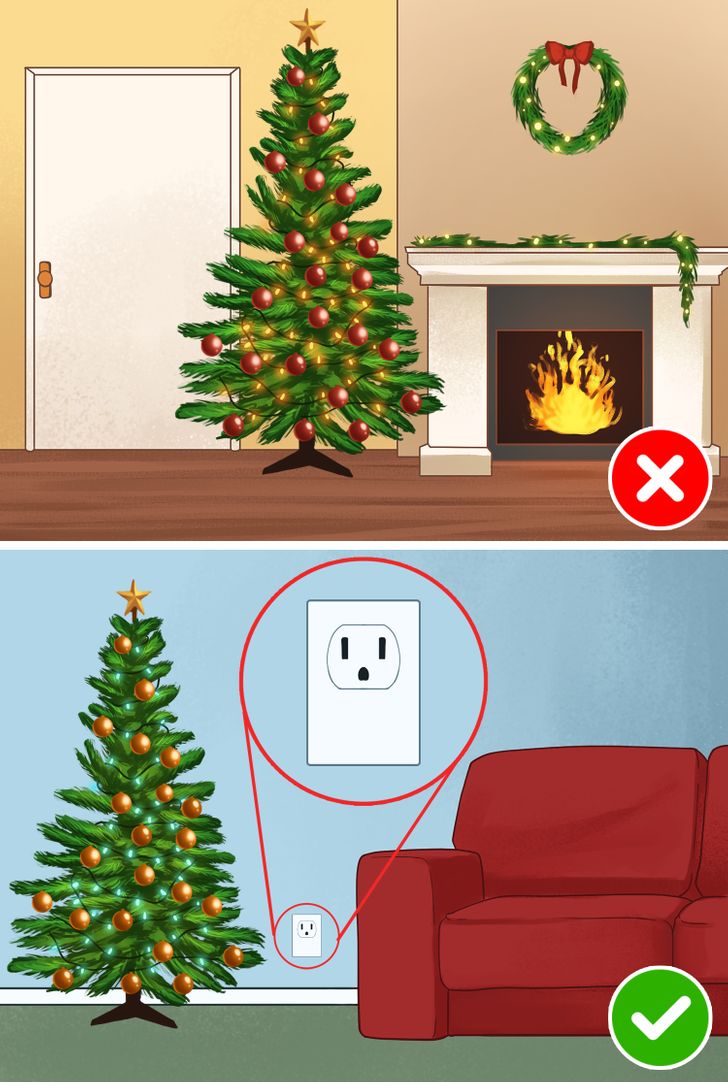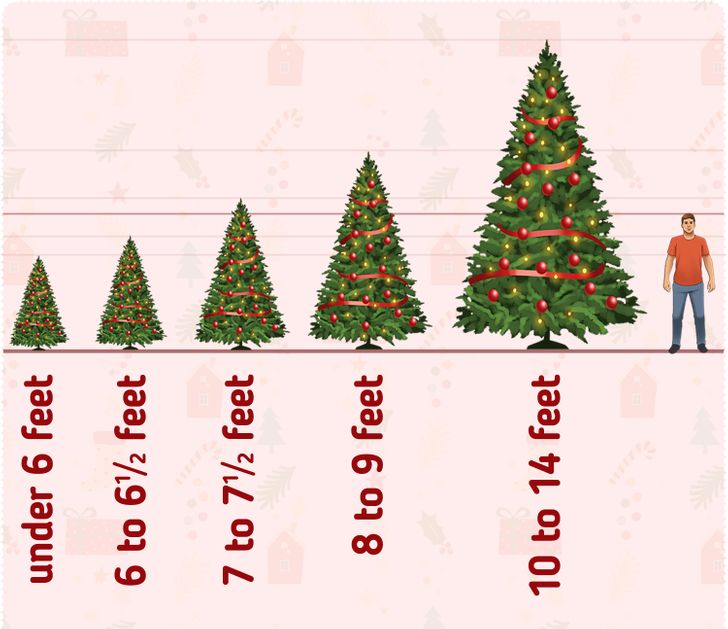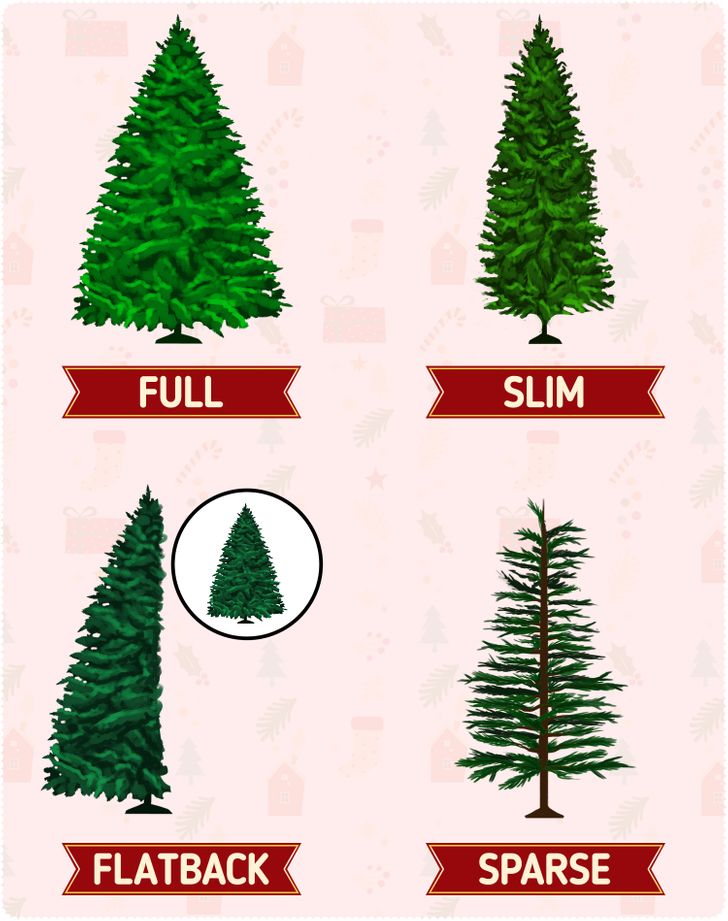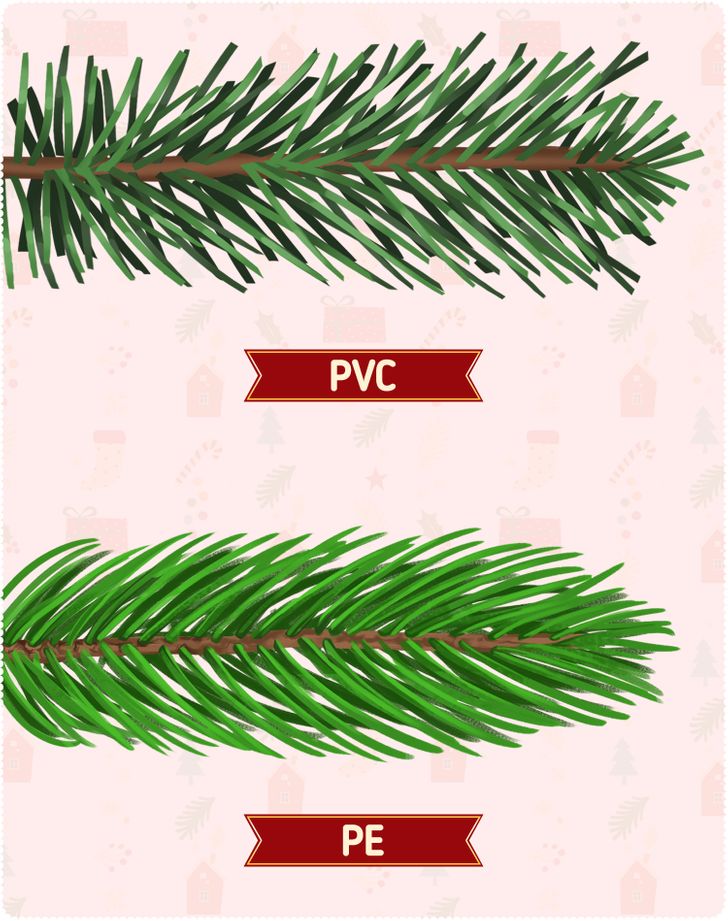How to Choose an Artificial Christmas Tree
Artificial Christmas trees can be an excellent choice for this holiday season. They not only are hypoallergenic, but they also come in a variety of styles. However, choosing the right tree can become a difficult task, especially if you’re in a hurry.
5-Minute Crafts has prepared this short but useful guide to give you a hand while shopping for the perfect Christmas tree.
1. Pick a spot to display your tree.

When getting a brand new Christmas tree, one of the first things you need to do is choose a spot for it so that you know the space there is available. The living room is among the most common places to display it. However, you may want to consider the following factors so that you pick the appropriate place:
- Visibility: As your Christmas tree will be the central point in your home during this holiday, it’s advisable to put it in a large room or wherever you can draw attention to it.
- Foot traffic: Provide enough room between your tree and doorways, and leave a clear area to place gifts when the time comes.
- Power source: Give your tree a spot close to an electrical outlet. This will ensure easy lighting and prevent the need for extra cords that could pose safety hazards.
❗For safety, remember to place your Christmas tree away from fireplaces, radiators, or any other heat sources.
2. Find the perfect tree height.

Find out how much room there is in the spot you chose for your Christmas tree. To measure the ideal height, calculate the distance between the floor and the ceiling with measuring tape. If you want to use a tree topper, subtract 12 inches from the total height, or 6 inches if you’re not planning to do so.
Take a look at the following information and the image above. They will help you get a better idea regarding your tree height and the ideal places to display it:
- Under 6 feet: tabletops, bedrooms, and small spaces
- 6 to 6 1/2 feet: rooms with low ceilings
- 7 to 7 1/2 feet: 8 or 9-foot ceilings
- 8 to 9 feet: areas with high ceilings
- 10 to 14 feet: vaulted ceilings and public areas
3. Choose the shape.

Since the shape can be directly related to how much room your Christmas tree will use, it’s a good idea to measure the width there is available. With a measuring tape, calculate the floor space and subtract 12 inches from the width. The resulting number will be the maximum width for your Christmas tree. Once you have this information, it will be easier to choose the right shape.
Some of the most common shapes you will find are:
- Full: broad trees, with wide bottoms and thin tops. They resemble natural Christmas trees and are ideal for big rooms.
- Slim: compact trees with a thin appearance. They can fit in apartments, studios, or tight spaces in general.
- Flatback: trees with a full profile and a flat side. This feature allows you to lean them against a wall.
- Sparse: trees with scattered branches to hang ornaments. They have a natural, minimalist look.
4. Get familiar with the materials available in the market.

Another aspect to consider when purchasing an artificial Christmas tree is the material it is made of, which will determine how real your tree will look, as well as its price.
Artificial Christmas trees are commonly made from:
- PVC (polyvinyl chloride): These are affordable and dense. The tree needles are made of thin plastic sheets. PVC trees have to be shaped after being taken out of storage.
- PE (polyethylene): These are the most lifelike. The tree needles are bigger and resemble evergreen needles. The branches are sculpted to achieve a more realistic appearance.
You may be able to find trees with a combination of both materials. These can be budget-friendly and a very good choice since PE looks more natural than PVC.